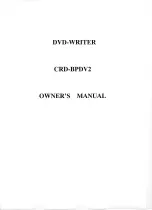
B-10 Brake Function
Option:
Function:
that AC brake is not as effective as dynamic
breaking with resistor.
AC brake is for Adv. Vector Control and flux
mode in both open and closed loop.
B-11 Brake Resistor (ohm)
Range:
Function:
50.00
Ohm
*
[5.00 -
65535.00
Ohm]
Set the brake resistor value in Ohms.
This value is used for monitoring the
power to the brake resistor in
B-13 Braking Thermal Overload
. This
parameter is only active in frequency
converters with an integral dynamic
brake.
Use this parameter for values without
decimals. For a selection with two
decimals, use
B-11 Brake Resistor (ohm)
.
B-12 Brake Power Limit (kW)
Range:
Function:
5.000
kW
*
[0.001 -
2000.000
kW]
is the expected
average power dissipated in the brake
resistor over a period of 120 s. It is used as
the monitoring limit for
DR-33 Brake Energy /2
min
and thereby specifies when a warning/
alarm is to be given.
, the
following formula can be used.
Pbr,avg W =
Ubr2 V × tbr s
Rbr
Ω
×
Tbr s
P
br,avg
is the average power dissipated in the
brake resistor, R
br
is the resistance of the
brake resistor. t
br
is the active breaking time
within the 120 s period, T
br
.
U
br
is the DC voltage where the brake
resistor is active. This depends on the unit as
follows:
200-240 V: 390 V
380-480 V: 778 V
525-600 V: 943 V
525-690 V: 1099 V
NOTE
If R
br
is not known or if T
br
is different
from 120 s, the practical approach is to
run the brake application, readout
DR-33 Brake Energy /2 min
and then
enter this + 20% in
B-12 Brake Power
Limit (kW)
.
B-13 Braking Thermal Overload
Option:
Function:
This parameter is only active in frequency
converters with an integral dynamic brake.
This parameter enables monitoring of the
power to the brake resistor. The power is
calculated on the basis of the resistance
(
), the DC link voltage,
and the resistor duty time.
[0]
*
Off
No brake power monitoring required.
[1]
Warning
Activates a warning on the display when the
power transmitted over 120 s exceeds 100% of
the monitoring limit (
The warning disappears when the transmitted
power falls below 80% of the monitoring limit.
[2]
Trip
Trips frequency converter and displays an
alarm when the calculated power exceeds
100% of the monitoring limit.
[3]
Warning
and trip
Activates both of the above, including
warning, trip and alarm.
If power monitoring is set to
[0] Off
or
[1] Warning
, the
brake function remains active, even if the monitoring limit
is exceeded. This may lead to thermal overload of the
resistor. It is also possible to generate a warning via a
relay/digital outputs. The measuring accuracy of the power
monitoring depends on the accuracy of the resistance of
the resistor (better than
±
20%).
B-15 Brake Check
Option:
Function:
Select type of test and monitoring function to
check the connection to the brake resistor, or
whether a brake resistor is present, and then
display a warning or an alarm in the event of a
fault.
NOTE
The brake resistor disconnection function is
tested during power-up. However the brake
IGBT test is performed when there is no
braking. A warning or trip disconnects the
brake function.
The testing sequence is as follows:
1.
The DC link ripple amplitude is
measured for 300 ms without braking.
2.
The DC link ripple amplitude is
measured for 300 ms with the brake
turned on.
3.
If the DC link ripple amplitude while
braking is lower than the DC link ripple
Parameter Descriptions
AF-650 GP Programming Guide
DET-618C
129
3
3
















































